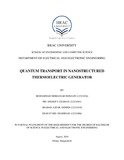| dc.contributor.advisor | Bhuian, Dr. Mohammed Belal Hossain | |
| dc.contributor.author | Hossain, Mohammad Mobassar | |
| dc.contributor.author | Uzzaman, Md. Sharif | |
| dc.contributor.author | Ahmed, Shabab Azfar | |
| dc.contributor.author | Shafat, Md. Shahriar | |
| dc.date.accessioned | 2016-09-19T09:54:00Z | |
| dc.date.available | 2016-09-19T09:54:00Z | |
| dc.date.copyright | 2016 | |
| dc.date.issued | 2016-08 | |
| dc.identifier.other | ID 12321036 | |
| dc.identifier.other | ID 12321041 | |
| dc.identifier.other | ID 12321018 | |
| dc.identifier.other | ID 12321006 | |
| dc.identifier.uri | http://hdl.handle.net/10361/6413 | |
| dc.description | This thesis report is submitted in partial fulfillment of the requirements for the degree of Bachelor of Science in Electrical and Electronic Engineering, 2016. | en_US |
| dc.description | Cataloged from PDF version of thesis report. | |
| dc.description | Includes bibliographical references (page 58-64). | |
| dc.description.abstract | In this study, we found thermoelectric figure of merit (ZT) at different room temperatures which performed better than conventional temperature. From a transition metal dichalcogenide material MoS2 we got the highest ZT value of 4.392 at 300K. Besides this, in metal oxide such as ZnO gives the highest ZT value of 1.7108 at 310K. We have also studied Si-n Type, Si-p Type and SiGe which gives the value of ZT 2.405, 2.850 and 2.320 respectively at 300K.This study represents a bona fide study of thermoelectric materials accompanied by the modeling and simulations of an asymmetric thermoelectric device structure. The thermoelectric module will possess attributes such as a novel module design and a room temperature range rather than conventional high temperature modules. Electro-thermal interaction is commonly considered only as a matter of Joule heating. In addition, the Seebeck, Peltier and Thomson effects are significant in materials with high thermoelectric figure of merit ZT. The materials that are currently being used by researchers in thermoelectric devices are semiconductors and metal-oxides. These materials include Sb2Te3, PbTe, Bi2Te3, (BiSb)2Te3, SiGe, Si; which are specifically developed for conventional and high temperature ranges. And from our study we have already said that there is another class of materials that are metal dichalcogenides(MoS2) which have a good figure of merit(ZT) at room temperature. A high Seebeck coefficient 𝛼, a good electric conductivity 𝜎 and a poor thermal conductivity 𝐾 are the characteristics of these materials. As a result, thermal and electrical performance of the thermoelectric module which represents a good electrical performance in thermoelectric generator. | en_US |
| dc.description.statementofresponsibility | Mohammad Mobassar Hossain | |
| dc.description.statementofresponsibility | Md. Sharif Uzzaman | |
| dc.description.statementofresponsibility | Shabab Azfar Ahmed | |
| dc.description.statementofresponsibility | Md. Shahriar Shafat | |
| dc.format.extent | 64 pages | |
| dc.language.iso | en | en_US |
| dc.publisher | BRAC University | en_US |
| dc.rights | BRAC University thesis are protected by copyright. They may be viewed from this source for any purpose, but reproduction or distribution in any format is prohibited without written permission. | |
| dc.subject | Quantum transport | en_US |
| dc.subject | Thermoelectric generator | en_US |
| dc.title | Quantum transport in nanostructured thermoelectric generator | en_US |
| dc.type | Thesis | en_US |
| dc.contributor.department | Department of Electrical and Electronic Engineering, BRAC University | |
| dc.description.degree | B. Electrical and Electronic Engineering | |

